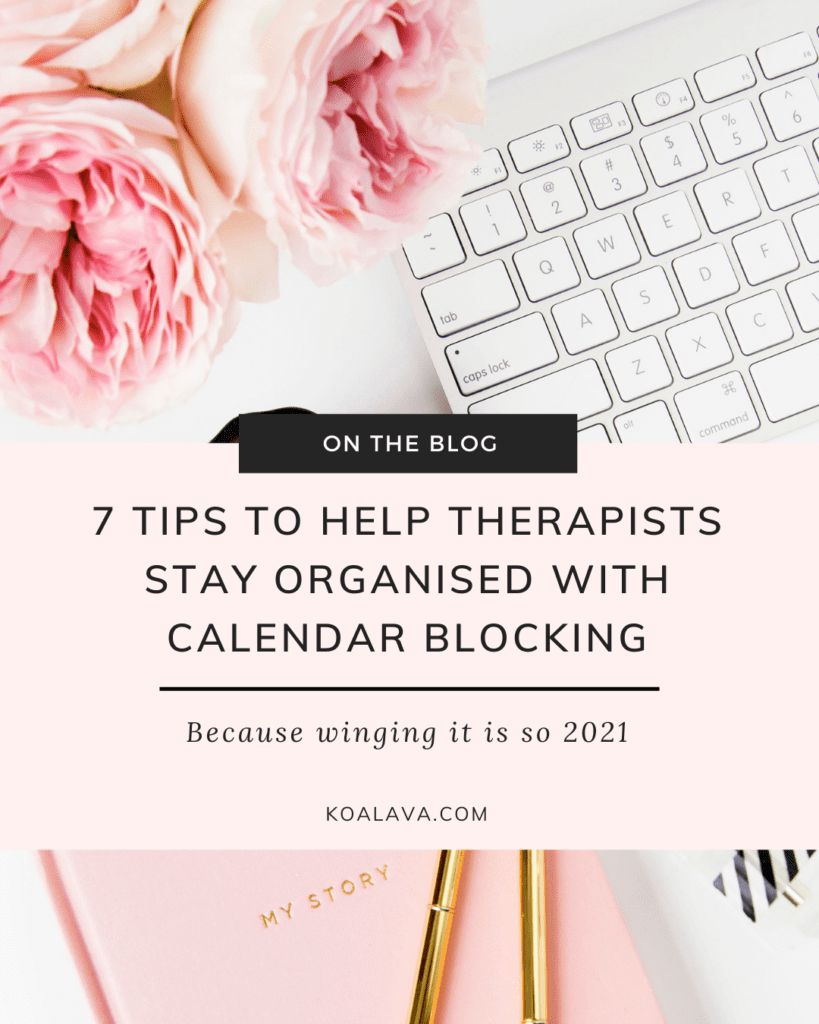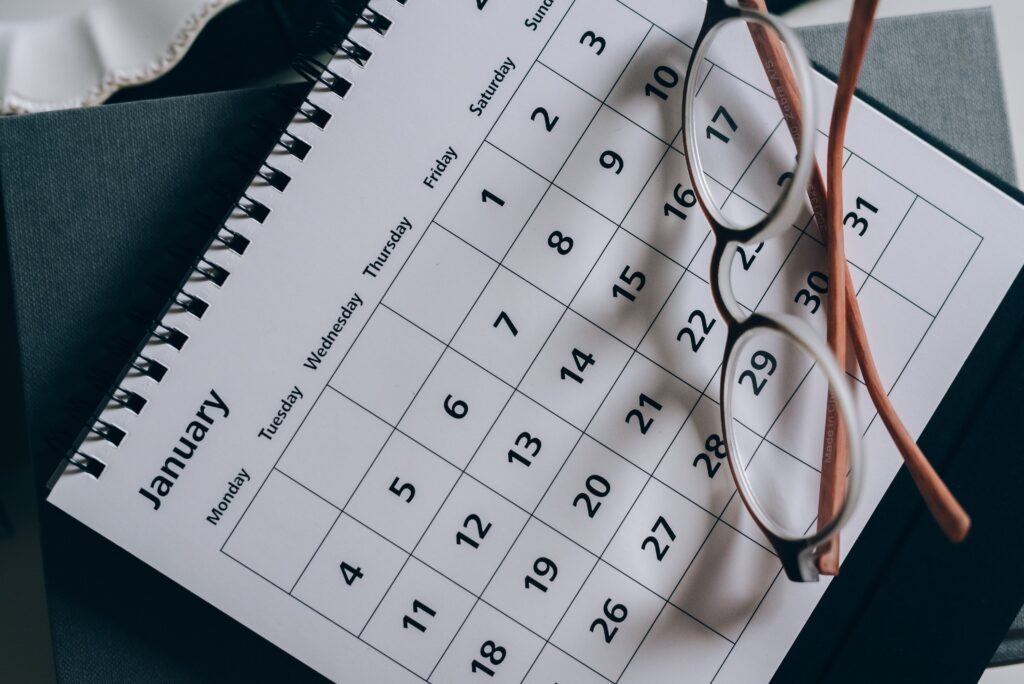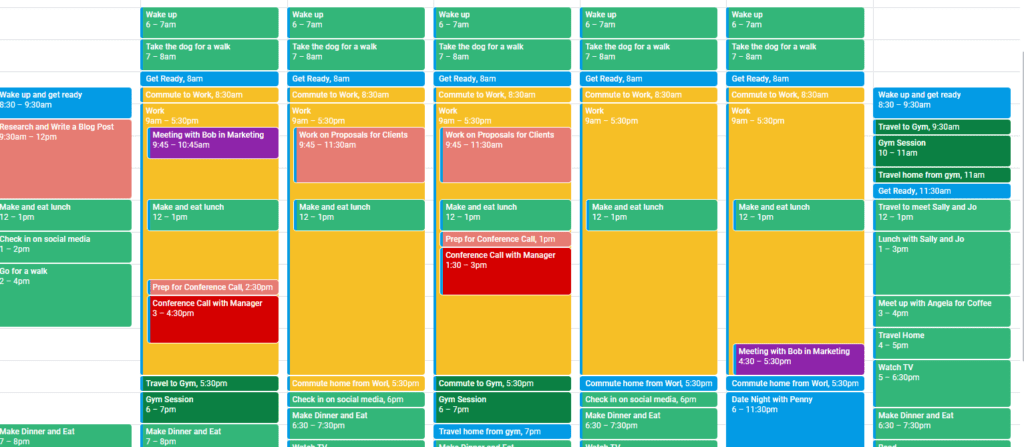What is calendar blocking?
Calendar Blocking is the process of taking all of your to-dos – your: I have to-dos, I really should to-dos and I want to-dos – and purposefully scheduling them into your calendar.

It’s almost 5pm at the moment and, according to my calendar, that means it’s time to update this article (originally posted in 2019) for 2022.
Guess what I’m doing?
That’s right – just that!
Calendar Blocking is a way of turning your tasks into time slots.
What’s so special about Calendar Blocking?
If this time wasn’t intentionally scheduled in my calendar I may very well be updating this article or I might be doing 101 other things that may or may not be as productive.
Calendar Blocking turns tasks into time slots and helps you to equate tasks to your valuable time. A task on a to-do list isn’t much use to anyone unless you’ve intentionally considered when it’s best to carry it out and how long it will even take you to complete.
Hands up who’s written a to-do list but then lost it/got distracted/forgot all about it or just not “shown up” and completed the tasks on it?
Yep, me too.
By time blocking your calendar, you can save on procrastination and stop wasting time while still being able to move tasks around when needed. (Big emphasis on the ‘when needed’ bit.)
So without further ado, here’s what to do…
How to Calendar Block like a pro

1. Use Colour Coding
Some people like stickers or emojis but I’m a colour coding girl.
Colour coding will help you to quickly reference your day/week/month and identify your work and personal commitments. If you know your gym time is green then you’ll be able to find your scheduled workout sessions in lightning quick time.
2. Block Similar Tasks Together
To save time switching from one task to another, try to block similar tasks together as much as possible. For example, if you need to write 3 blog posts this week which requires you to be in a certain mindset (or playing a particular podcast etc.) block the time for all 3 together so you stay in the zone and get the most out of that time.
3. Use Different Calendars to Share Info with Others
Most calendar services (like Google Calendar) allow you to set up more than one calendar. You might want to do this if you want to share your meeting schedule, but not your hair appointment time, with your colleagues. You’ll be able to see everything but they’ll only see what you want/need them to, allowing for both efficiency and privacy.
4. Schedule All Your Routines
Ok, so scheduling your bedtime might feel like an odd thing to do but stay with me here.
Scheduling all of your routines (including when to get up and when to get ready for bed) will help you visualise how much time you have available in a day to get things done. Not only that but it will also act as an accountability prompt… Sure, 11:34 pm you might be happy staying up to watch just one more episode of [insert name of any wildly binge-able Netflix show here] but how’s 6:15 am the next morning you going to feel?!
5. Take Nothing for Granted
Make sure to include time to switch tasks and commute. You don’t instantly go for your front door to your therapy office in 0.1 seconds, so why should your schedule? Allowing for things such as commuting will help you stay on track all day and also helps to ensure your plans are realistic.
6. Don’t be Unrealistic
We might not always know how long a task will take us and that’s to be expected, but don’t be brazenly unrealistic. If you know your Zoom meetings with Bob – your overly talkative associate – tend to drag on there’s no point only allowing 20 minutes in your calendar. This will just disrupt all your other tasks for the day.

7. Pay Close Attention to Trends
Calendar blocking is an excellent way to notice trends. Pay attention to them and adjust as necessary.
Are you properly accounting for your time? Are you just fooling yourself by scheduling in all those gym sessions?
If you’re regularly not “showing up” for something you’re claiming you want to do stop scheduling it until you’re ready to commit to it already!
Your blocked week might look something like this example I popped together

